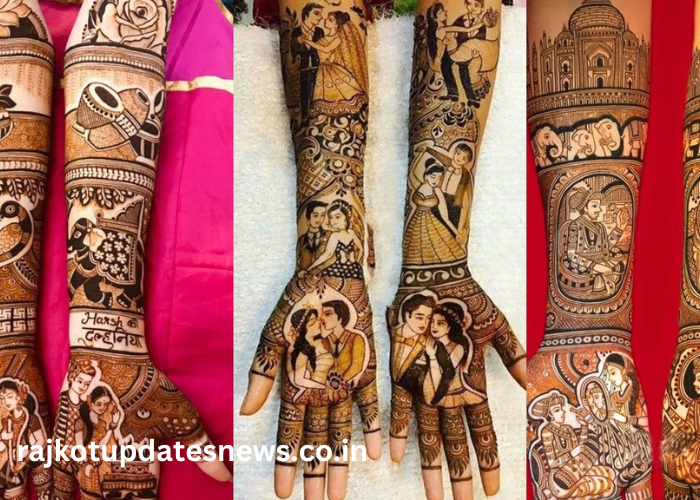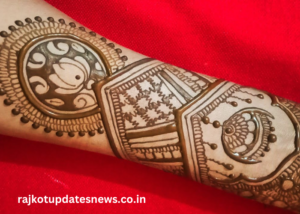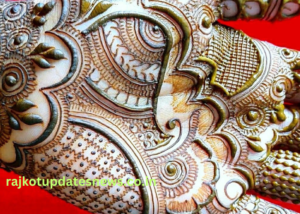
The bridal= dulhan:6knisq-Tt04= Mehndi Design has long been an essential tradition in wedding celebrations, particularly in South Asian cultures. As brides prepare for their special day, they seek out the perfect mehndi designs to adorn their hands, arms, and feet. These designs not only symbolize beauty but also embody love, prosperity, and new beginnings.
In modern times, the bridal= dulhan:6knisq-Tt04= Mehndi Design has evolved to include contemporary elements while still retaining its cultural roots. From intricate, traditional patterns to more minimalist and personalized designs, mehndi remains a timeless symbol of marriage, beauty, and happiness.
What Are the Cultural Significance and Symbolism of the bridal= dulhan:6knisq-Tt04= Mehndi Design?
The bridal= dulhan:6knisq-Tt04= Mehndi Design is more than just a decorative art form; it carries deep cultural symbolism. In many traditions, mehndi is believed to bring good luck and positivity to the bride. The application of mehndi to a bride’s hands and feet is a ritual that signifies her transition into a new phase of life, welcoming love, joy, and blessings from her family and new life partner.
The designs themselves often feature elements like flowers, paisleys, and mandalas, all of which hold symbolic meaning. Flowers symbolize beauty and fertility, while paisleys are associated with fertility and good fortune. Mandalas represent the universe and unity, making them a fitting choice for wedding mehndi designs. The bridal= dulhan:6knisq-Tt04= Mehndi Design encapsulates these symbols, intertwining them into a complex and beautiful work of art.
In addition to its cultural significance, the bridal= dulhan:6knisq-Tt04= Mehndi Design has evolved to include modern touches, reflecting the bride’s personal style, her love story, and the shared bond between her and her partner. The inclusion of initials, wedding dates, or even subtle hidden symbols of the couple’s journey together has become a popular trend.
How Long Does It Take to Apply the bridal= dulhan:6knisq-Tt04= Mehndi Design?
Applying the bridal= dulhan:6knisq-Tt04= Mehndi Design is a time-intensive process that requires patience and precision. The duration depends on the complexity of the design, the size of the coverage area, and the experience of the artist. Typically, it takes anywhere between three to six hours to complete the application of the mehndi.
The process begins with the selection of a design that resonates with the bride’s personal style and cultural background. Once the design is chosen, the artist begins applying the henna paste using a fine-tipped cone or a piping tool, carefully tracing out each intricate detail. The application process involves both precision and creativity, as the artist works to ensure that the bridal= dulhan:6knisq-Tt04= Mehndi Design flows seamlessly across the hands, arms, and feet.
After the henna paste is applied, it must dry for several hours. During this time, the bride remains still to prevent smudging. Once the paste is dry, it is gently scraped off to reveal the beautiful stain beneath, which will continue to darken over the next 24 to 48 hours.
What Are the Key Design Elements in the bridal= dulhan:6knisq-Tt04= Mehndi Design?
The bridal= dulhan:6knisq-Tt04= Mehndi Design is characterized by several key elements that come together to form an intricate, cohesive design. These elements include floral patterns, paisleys, geometric shapes, and symbolic motifs.
Floral patterns are a major feature of the bridal= dulhan:6knisq-Tt04= Mehndi Design, symbolizing beauty, fertility, and new beginnings. The use of roses, lotuses, and other flowers in the design adds a touch of femininity and elegance. These flowers are often placed in the center or along the edges of the design, giving it a balanced, symmetrical appearance.
Paisleys are another essential element, representing fertility and prosperity. The intricate, teardrop-shaped motifs are used to fill in spaces between larger designs, giving the mehndi its distinct appearance. Geometric patterns and mandalas add structure to the design, symbolizing balance, unity, and the cyclical nature of life.
In addition to these traditional motifs, many modern bridal= dulhan:6knisq-Tt04= Mehndi Design now include personalized touches, such as initials or wedding symbols, adding a personal story to the artwork.
How Can You Personalize Your bridal= dulhan:6knisq-Tt04= Mehndi Design?
Personalizing the bridal= dulhan:6knisq-Tt04= Mehndi Design is a wonderful way to make the design unique and special to the bride. Customization can be done in many ways, starting with the selection of motifs and symbols that hold personal meaning.
For example, some brides choose to incorporate their partner’s initials or a significant date, such as the date of the engagement or wedding. These elements can be subtly hidden within the design, adding an intimate touch to the overall artwork.
Another way to personalize the bridal= dulhan:6knisq-Tt04= Mehndi Design is by using colors that match the bride’s wedding attire. While traditional mehndi is a rich brown color, some brides choose to use colored henna such as gold, red, or even white. These colors can enhance the design and make it stand out, complementing the bride’s dress and overall wedding theme.
How Do You Care for the bridal= dulhan:6knisq-Tt04= Mehndi Design to Make It Last?
Caring for the bridal= dulhan:6knisq-Tt04= Mehndi Design after application is essential to ensuring its longevity and vibrancy. The henna stain typically darkens over the first 24 to 48 hours, so proper aftercare is crucial for maintaining the design’s rich color.
After the paste is removed, it is important to avoid washing the area with water for at least 12 hours. Moisturizing the skin with coconut oil, olive oil, or a special mehndi aftercare oil can help preserve the design and keep the skin hydrated. Some brides also use a sugar and lemon juice mixture to help the henna darken and last longer.
To maintain the beauty of the bridal= dulhan:6knisq-Tt04= Mehndi Design, it’s essential to avoid activities that can cause the henna to fade, such as excessive sweating or scrubbing the area. Wearing gloves and avoiding direct contact with water can also help extend the life of the design.
What Are Some Common Trends in bridal= dulhan:6knisq-Tt04= Mehndi Design?
Over the years, the bridal= dulhan:6knisq-Tt04= Mehndi Design has evolved to incorporate modern trends, while still maintaining its traditional roots. One of the most notable trends is the use of minimalistic, geometric designs. These contemporary patterns emphasize clean lines and negative space, giving the mehndi a modern and sophisticated look.
Colored henna is also gaining popularity among brides who want to add a pop of color to their design. Gold, white, and red henna are particularly popular, as they complement the bride’s attire and wedding theme. These colored designs are often used to create delicate details within the larger traditional patterns.
Another trend is the use of personalized motifs. Brides now often request designs that include hidden initials, symbols, or quotes that represent their relationship or wedding story, making their bridal
= dulhan:6knisq-Tt04= Mehndi Design even more meaningful.
How Much Does a bridal= dulhan:6knisq-Tt04= Mehndi Design Cost?
The cost of a bridal= dulhan:6knisq-Tt04= Mehndi Design can vary significantly based on several factors, including the artist’s reputation, the complexity of the design, and the location. On average, bridal mehndi designs can range from $100 to $500 or more.
Simple designs tend to be on the lower end of the price spectrum, while intricate, custom designs with personalized elements can be more expensive. Additionally, if you are having the design applied to both hands, arms, and feet, the cost will likely be higher due to the larger area and increased time required for application.
Some mehndi artists also offer packages that include a pre-wedding henna application for guests, or other wedding-related services, which can influence the overall cost of the bridal mehndi.
Where Can You Find the Best bridal= dulhan:6knisq-Tt04= Mehndi Design Artists?
Finding the best bridal= dulhan:6knisq-Tt04= Mehndi Design artists requires research and careful consideration. Many brides look for recommendations from friends, family, or wedding planners who have worked with experienced henna artists in the past. Online platforms like Instagram and Pinterest are also great resources for finding talented mehndi artists, as they often showcase portfolios of their work.
When searching for a mehndi artist, it is important to review their previous work, ensuring that their style aligns with what you envision for your wedding. Additionally, meeting with the artist before the wedding day allows you to discuss the design in detail, ensuring that it meets your expectations.
Conclusion
The bridal= dulhan:6knisq-Tt04= Mehndi Design is more than just an aesthetic choice—it’s a deeply symbolic and cherished tradition in many cultures. From intricate patterns to personalized touches, every mehndi design tells a story of love, commitment, and beauty. With the right care and a skilled artist, the bridal= dulhan:6knisq-Tt04= Mehndi Design can be a stunning, lasting reminder of a bride’s special day. Whether you choose a traditional design or a modern twist, the beauty of mehndi will always be a cherished part of your wedding experience.


